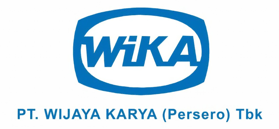Designing a Complex Toll Road
To improve transportation in Indonesia and support the country’s continued growth, PT Trans Bumi Serbaraja set out to build an IDR 890 billion, 39.8-kilometer toll road connecting Serpong and Balaraja within the Banten province of Indonesia. They tasked PT Wijaya Karya with design responsibilities, and the design team soon discovered that connecting the two cities, as well as connecting the new toll road to existing roads, would require creative planning. The project included the construction of 10 ramps and a bridge for the various interchanges. The soil composition varied widely along the path, which complicated the earthworks required to stabilize the road. The team quickly determined that traditional design methods would not fully support the development.
Seeking the Advantages of BIM Design
PT Wijaya Karya realized that not only would using BIM applications help them overcome the construction challenges for this toll road, but they could also use it as a pilot to help engineers and stakeholders improve their work within a digital environment. For the pilot to be considered successful, their design workflow needed to improve communication between all stakeholders, streamline the review process, and enhance the design. Additionally, the final 3D model needed to integrate all asset information to support ongoing operations and maintenance. PT Wijaya Karya sought out a suite of BIM solutions that could allow them to meet all the project’s goals.
Going Digital to Optimize the Design
After evaluating several options, PT Wijaya Karya determined that they could make the pilot project successful by using Bentley applications. They first established a connected data environment with ProjectWise, which gave stakeholders the confidence that all information is up to date. Next, they used ContextCapture to process aerial photographs, drone surveys, and geodetic surveys into a reality mesh of the development site. Using OpenBridge, OpenBuildings, OpenRoads, and other Bentley applications, they modeled the new roadway and its interchanges within the reality mesh, enabling them to determine how the new road interacts with existing roads. Lastly, PLAXIS helped them plan all needed earthworks while accounting for the different types of soil compositions.
Reducing Resource Hours while Saving Money
Using Bentley applications, PT Wijaya Karya improved visualization of the site conditions and helped designers perform faster and more accurate soil volume calculations while lowering the amount of resource hours needed. Producing a reality mesh with drones and ContextCapture reduced survey time from four days to one, compared to manual surveys. Overall, going digital reduced the amount of time for surveying and design by 25%. Optimizing the design resulted in reductions in the materials required for the bridge superstructure, the amount of concrete needed, the extent of earthworks, and the volume of land to be purchased. All told, these improvements reduced costs by 3%. Additionally, by going digital, PT Wijaya Karya improved all aspects of the design, established strong coordination among stakeholders, and provided a full set of asset information within a federated model to assist with operations.
Outcome/Facts
- PT Wijaya Karya’s design work for a new toll road connecting Serpong and Balaraja in Indonesia was selected as a pilot project for BIM design for roadways.
- The project team determined that Bentley’s suite of digital design applications would help them create a federated model that incorporated all needed asset information for ongoing operations.
- Digital design with Bentley applications helped PT Wijaya Karya reduce surveying and design time by 25% and lower costs by 3%.

